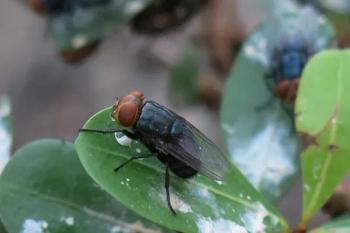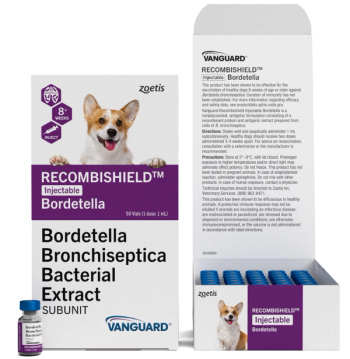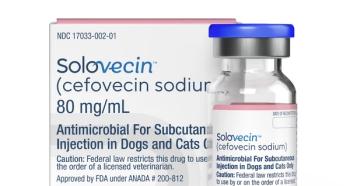
Equine Image Quiz: A large, ulcerated abdominal lesion
The itchy, growing wound also contains small, gritty masses. What is the most likely diagnosis?
Images courtesy of Laura M. Riggs, DVM, PhD, DACVS-LA, DACVSMR
You are asked to evaluate a large, ulcerated lesion on the ventral abdomen of a 10-year-old quarter horse mare. The owner reports that the rapidly growing mass is pruritic and that the horse has been seen rubbing and biting at the lesion. The lesion contains draining tracts from which you remove several small, gritty, tan masses. The mare has no other lesions, and the remainder of the physical examination is unremarkable. What is the most likely diagnosis in this horse?
A. Squamous cell carcinoma
B. Pythiosis
C. Sarcoidosis
D. Habronemiasis
If you chose B.) Pythiosis, you are correct!
Pythiosis is the term used for infection caused by the fungus-like microorganism Pythium insidiosum. The organism is primarily found in warm, humid regions like the southeastern United States, and infection occurs through small wounds or skin lesions. Horses that stand in lake water, swamps or flooded areas have an increased risk of infection, and lesions are most commonly found on the distal extremities and ventral abdomen.
The lesions develop quickly and can become quite large in days to weeks. Unlike the other diagnoses listed, they are often pruritic, and self-induced trauma to the area is common. Another common finding is the presence of kunkers, or small, gritty, coral-like masses found within the ulcerated tissue. While these kunkers are not pathognomonic for Pythium insidiosum, their presence is highly suggestive of the organism.
As with any mass-like lesion, tissue samples should be submitted for histopathologic evaluation. However, histopathology results may only indicate granulomatous inflammation with or without hyphae, and special stains may be indicated to further differentiate the findings.
Definitive diagnosis of pythiosis is based on culture of the causative organism, but history, clinical signs and histopathology results are highly suggestive. Successful culture of the organism can be difficult. Culture of the kunkers found within the lesion is more often successful than culture of the surrounding tissue alone.
Treatment should be initiated as soon as pythiosis is suspected, as the prognosis for large or chronic lesions is poor. Successful resolution usually involves a combination of therapies, including aggressive surgical excision, antifungal administration (like amphotericin B) and immunotherapy. An immune-modulating “vaccine” has improved the prognosis, particularly in acute cases.
If identification and treatment are delayed, the lesions can quickly invade deeper structures, including tendons, ligaments, muscles and joints. Once these structures are involved, treatment becomes very difficult. Equine practitioners are advised to keep pythiosis on the differential list for lesions of this description.
Newsletter
From exam room tips to practice management insights, get trusted veterinary news delivered straight to your inbox—subscribe to dvm360.






